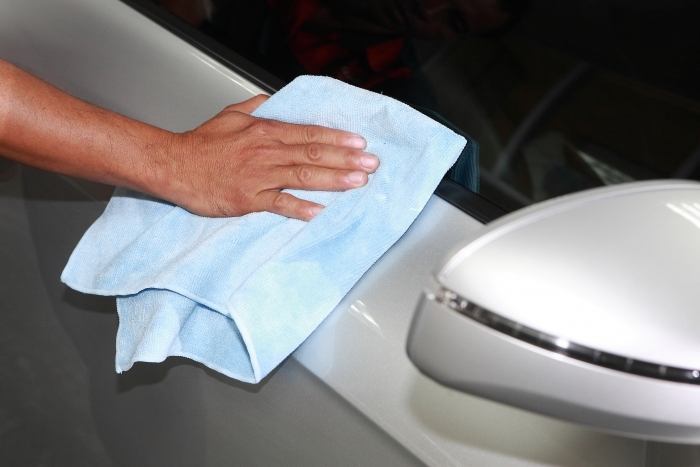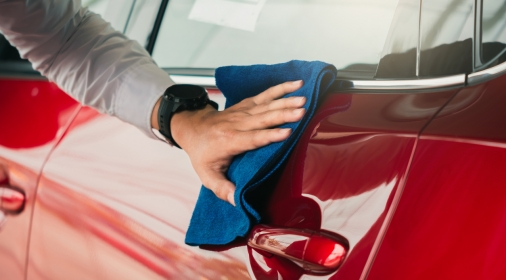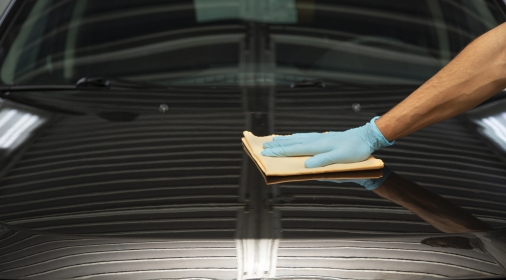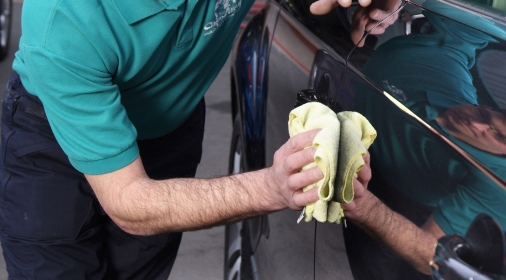What’s the Difference Between Car Polish and Car Wax?
What Is the Difference Between Car Polish and Car Wax? Which Product Is Best To Use On Your Car?
From car shampooing to polishing, waxing to super-shining, each car product is designed to do a very specific thing, for a very specific issue. But when you choose to smarten up or need to know how to polish your car by hand, having the right products to help restore your car back to near-perfection can become a little more complicated. This is especially so when it comes to understanding the difference between car polish and car wax and when to use either one. You certainly wouldn’t be alone in confusing one for the other, so we’ve made it easy for you.
When it comes to car polish and car wax, it is crucial to know one is an abrasive and the other a filler. Although the misconception exists that they can be used interchangeably, in reality, each of these products serves its own individual purpose. Car wax, polish and other finishing compounds need to be treated separately to ensure the best output for your car.

Where a vehicle’s paintwork shows signs of dimples, dullness and even oxidation (where the lacquer appears to fade and become patchy in places – typically visible in older, often red, cars) users regularly turn to car polishes which contain chemical cleaners that help to flatten and level the vehicle’s paint surface, often removing minor surface scratches. Available in varying levels of abrasiveness, car polish is not initially designed to protect, but rather to correct flaws by removing them.
Car wax, on the other hand, is typically designed to enhance and protect a previously polished car surface by filling in any imperfections that appear in a car’s exterior with the intention to create a smoother, more evenly-reflecting tone overall. It is non-abrasive which means that very often polishing cars and waxing cars work to complement each other and protect the long-term quality finish of your vehicle’s exterior.
How Do Car Wax and Car Polish Work on Cars?
Most car waxes are a combination of natural waxes and other solvents used to smoothen the appearance of the paint on your car by filling in any small imperfections in the paintwork that may exist. Although many natural waxes have certain traits which suit them better to be used as car waxes, the most widely used car wax is created from natural Carnauba Wax – a wax extracted from the leaves of palm trees grown in South America.
Car polish, in contrast, is an abrasive polish that is designed to remove the very fine layers of the top layer of your protective paintwork layer – leaving a smoother, even surface which catches the light and gives off a very shiny, highly-polished effect. Many car polishes also include certain types of gloss-enhancing oils which help to create a shiny effect on your paintwork.
What Is The Texture of Car Wax and Car Polish?
Wax in its natural state, is meant to be something that is largely resistant to water and durable in high temperatures. This is why wax used in automotive practices needs to be something that’s insoluble in water and will not immediately disappear after a rain shower or a car wash. At the same time, because of a high melting point for wax, the product withstands the hotter summer months without melting and dripping off your car.
Because car polish is an abrasive material, using a high-quality car polishing product means that as you work it onto the bodywork, the abrasive particles will be broken down the more it is manipulated and polished into the paintwork. This is why many polishes are known to be called diminishing abrasives because they diminish over time.
How To Apply Car Polish and Car Wax?
Depending on what you’re trying to achieve when polishing your car, applying a car polish can be done either by hand or by using polishing equipment like an orbital buffer. Once your vehicle has been washed, car polish can be applied to a soft cloth or the pad of an orbital buffer and rubbed in small circular motions continuously onto your car’s paintwork until the polish disappears completely and your car is polished.
In contrast, applying car wax requires you to apply the wax to a soft cloth and smear over sections of your car’s paintwork, leaving it for a few minutes until it is ready to be removed.
What We Say at ChipsAway
Regardless of what you’re trying to achieve in sprucing up your car’s exterior, it’s always important that you consult a professional if you’re uncertain about how to go about repairing any blemishes yourself with Car Polish or Wax. DIY is great for most things, but when it comes to more problematic repairs, unfortunately, the risk is greater for doing more harm than good and can leave you with a hefty damage bill when all is done.
ChipsAway has over 200 car body repair specialists who deliver the highest quality of car body repairs – from car paint scratch repairs and bumper scuff repairs to car dent and alloy repairs. Our specialists eliminate the inconvenience and potential expense of using a bodyshop when things go wrong. Want to know more? Get a free estimate today.
Is Polish Good For A Car?
Polish can be good for a car’s paintwork but whether it is good for your car’s specific needs depends on your car’s paintwork. Car polish is an abrasive which contains chemical cleaners to help flatten and level the surface of your car’s paintwork. Polish is typically helpful when car paintwork is dimpled, dull or showing signs of oxidation.
If your car needs minor imperfections filled, paint protection or the paintwork sealing then a Car Wax is going to do more good for your car’s paintwork than a polish will.
Can You Just Polish A Car?
You can definitely just polish a car and any minor flaws will be removed by the abrasive nature of the car polish; however, you won’t be protecting your car’s paintwork from future flaws and you’ll be polishing your car more often because of this. This is where car wax comes into its own as its specifically designed to protect and enhance paintwork that has previously been polished, creating a smooth and more evenly-reflecting surface overall.
How Much Does It Cost For Polishing A Car?
Polishing a car can vary in cost, firstly you will need to decide if you wish to carry out the work yourself or have a professional do the job, which is less risky.
If you decide to carry out the job yourself, you can pick up a car polish product from your local automotive retailer and these products will typically range from as low as £5 to £25+ depending on size and brand. Once you have the polishing product you then have two options for application, the first is by hand, using a foam applicator or soft microfibre style cloth and the second option is to use an orbital buffer. Overall, carrying out a polish by yourself can cost somewhere between £15 to £60+ in addition to the time it takes you to complete the work.
If you would prefer to go the less risky route and consult a professional to polish your car it can range from £10s to £100s and you can get a free estimate from one of our 200+ car body repair specialists who deliver the highest quality of car body repairs now to get an exact price.
Is It Better To Wax or Polish A Car?
Put simply, car wax is for protection and enhancement by filling in minor paintwork imperfections whereas car polish is for flattening and levelling paintwork by using abrasive chemicals. This is why the two products are typically complimentary to each other with polish initially used to remove minor flaws and then wax applied to seal and protect the paintwork.
So, if your car’s paintwork needs very fine flaws (such as dimples or dullness) removed from the top then car polish is generally the better choice. If your car simply needs a protective layer to fill minor imperfections, ward off rain or lessen the effect of the sun on the paintwork then car wax is a better choice.






